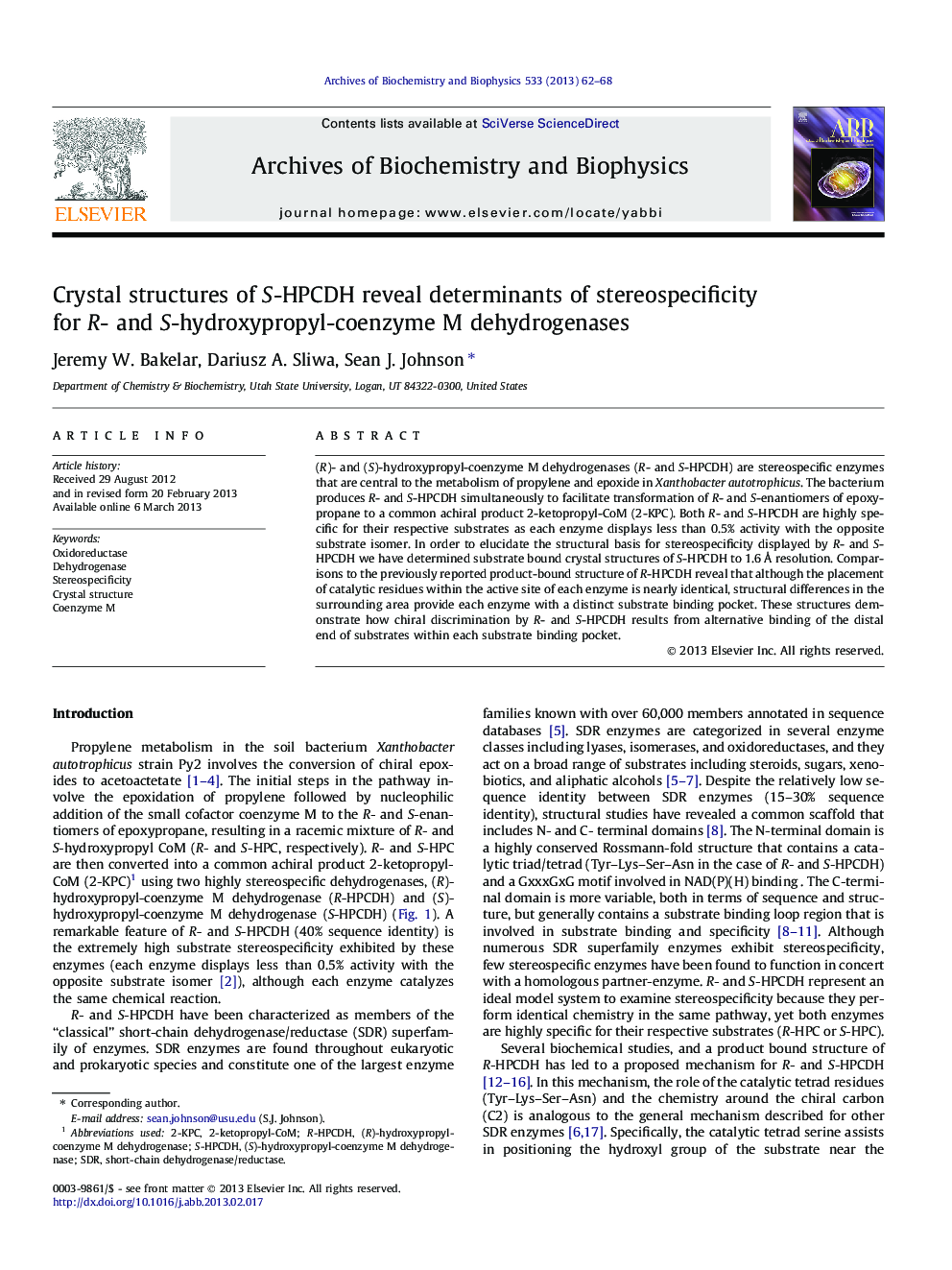| Article ID | Journal | Published Year | Pages | File Type |
|---|---|---|---|---|
| 1925359 | Archives of Biochemistry and Biophysics | 2013 | 7 Pages |
(R)- and (S)-hydroxypropyl-coenzyme M dehydrogenases (R- and S-HPCDH) are stereospecific enzymes that are central to the metabolism of propylene and epoxide in Xanthobacter autotrophicus. The bacterium produces R- and S-HPCDH simultaneously to facilitate transformation of R- and S-enantiomers of epoxypropane to a common achiral product 2-ketopropyl-CoM (2-KPC). Both R- and S-HPCDH are highly specific for their respective substrates as each enzyme displays less than 0.5% activity with the opposite substrate isomer. In order to elucidate the structural basis for stereospecificity displayed by R- and S-HPCDH we have determined substrate bound crystal structures of S-HPCDH to 1.6 Å resolution. Comparisons to the previously reported product-bound structure of R-HPCDH reveal that although the placement of catalytic residues within the active site of each enzyme is nearly identical, structural differences in the surrounding area provide each enzyme with a distinct substrate binding pocket. These structures demonstrate how chiral discrimination by R- and S-HPCDH results from alternative binding of the distal end of substrates within each substrate binding pocket.
► The first crystal structure of S-hydroxypropyl-coenzyme M dehydrogenase (S-HPCDH) has been determined. ► Binary (NAD+ bound) and ternary (NADH and S-HPC substrate bound) complexes are reported. ► The structures reveal the molecular basis of stereospecific substrate discrimination by R- and S-HPCDH.
